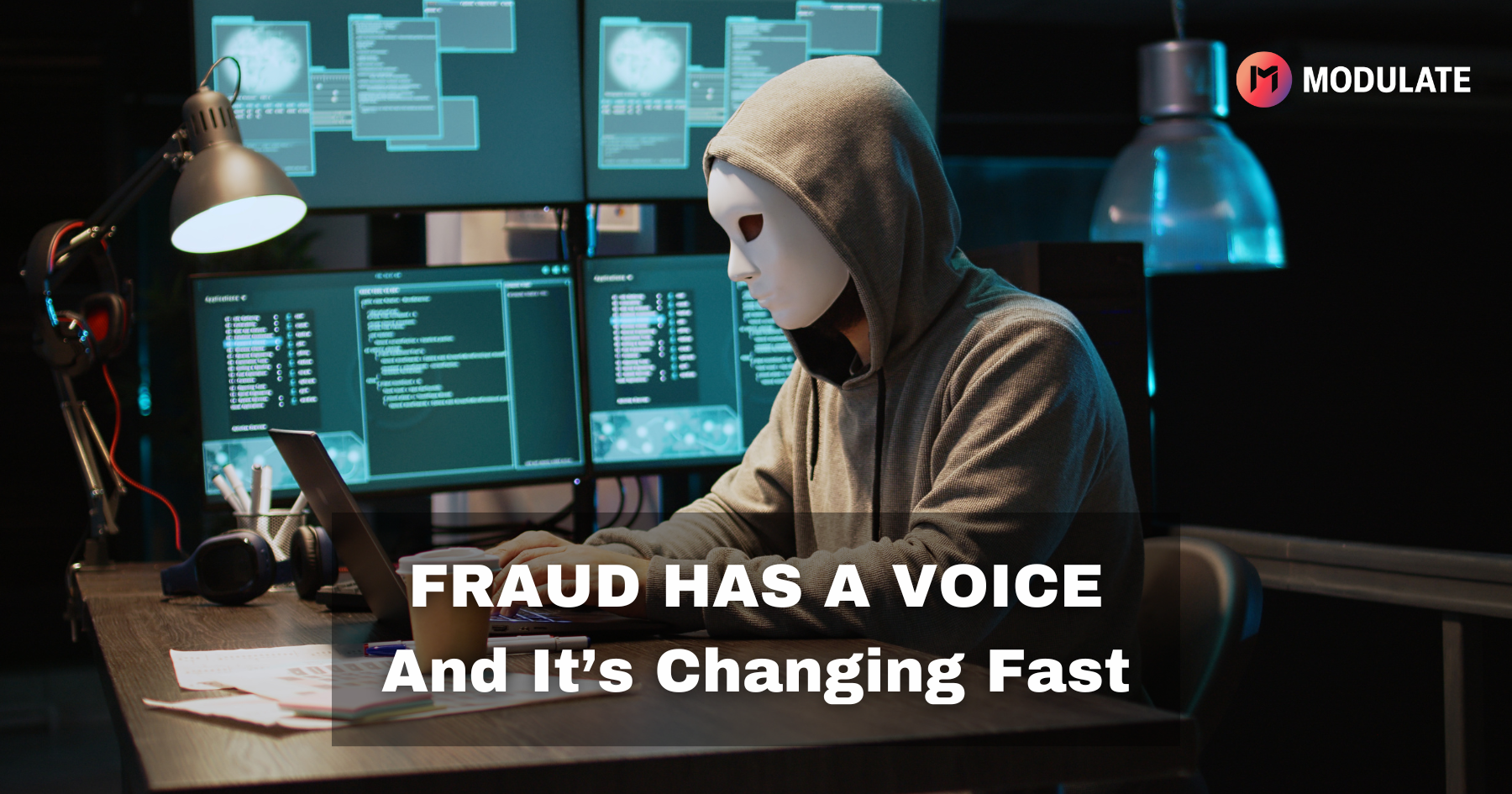Commitment to a Safe Community Starts with the Right Hiring Process

Modulate’s mission is to build a richer, safer, and more inclusive online experience for everyone by reducing toxicity in voice chat. Everyone is a key component of that mission: we have to make sure that we include individuals from all walks of life if we want to be truly inclusive.
We recently raised our Series A funding round, and have been using the funds to grow our team and scale our capabilities. That has meant many open job roles, many candidates, and many interviews over the past few months. As the External Relations Coordinator at Modulate, I’ve been spearheading the recruiting process, and wanted to outline the measures we go through to ensure we reduce bias as much as possible in hiring.
But first… what does Modulate do?
Our first product, ToxMod, was built to help content moderators and trust and safety teams respond proactively to toxic behavior and prevent harm from escalating. Today’s stats about toxicity in games are shocking, to say the least. 5 out of 6 adults ages 18-45 have experienced harassment in multiplayer games. Looking at it by numbers, that’s 80 MILLION adult gamers. Many of these players are impacted by identity-based harassment specifically. Those who identify as female, Black, Asian, LGBTQ+, or other marginalized identities especially face this type of discrimination within online games. The team at Modulate sees that something has to change. That’s why ToxMod was created.
Unlike many of today’s voice and chat moderation techniques, which rely on players to report incidents, ToxMod uses sophisticated machine learning to automatically recognize when conversations begin to take a bad turn. Then, it generates automated reports to be analyzed by human moderators.
We like to say that a huge part of ToxMod is understanding nuances. In practice, this means that the voices of reclaimed language for people groups such as folks of color or the LGBTQ+ community don’t get silenced. As an example, if I, as a queer person, use the word ‘queer’ over voice chat, I shouldn’t get banned. But someone else could use the same word as a form of identity-based harassment, and that needs to be reported. It’s all about these nuances. By having diverse representation on the team, it means we're more likely to factor in these groups when determining what is or isn't toxic behavior.
Our mission to create safer, better spaces for people of all races, ages, genders, ethnicities, and sexual orientations not only applies to our product ToxMod, but to our company culture as well. We can’t build a safe, genuinely inclusive community online unless we start with a safe, genuinely inclusive culture internally.
The importance of combating implicit bias
The bottom line as we developed our hiring process was to eliminate as much implicit bias from the interview process as possible. Implicit bias, by definition, is undetectable and unconscious. It’s something that all of us have, but is never visible in the mirror! But, implicit bias can majorly impact interviewing success for some candidates, as it causes factors other than actual qualifications to affect the interview outcome.
Because of this, we take the possibility of implicit bias very seriously. By truly getting to know candidates as their unique selves – not letting preconceived assumptions get in the way – we’ll find the best hires to inspire and impact Modulate, as well as experience personal growth within it.
How our hiring process works
Removing implicit bias is much easier said than done, which is why we’ve taken efforts to create a bespoke hiring process for any incoming interviewees. Here’s how it works.
Step 1: Written Questionnaire
First off, we ask the interviewee a few general questions as part of their application. In contrast to asking for a submitted resume, a process that invites implicit bias, the questions we ask are solely related to the candidate’s fit for the role. Most importantly, the candidate answers these questions without revealing their name or any other demographic information to the decision makers at Modulate. Their gender, race, age, etc. are all concealed from anyone involved in the decision-making process at this stage.
Step 2: Phone Conversation
Next, we conduct a phone interview with our candidate. We use a proprietary program built in-house to replace the interviewee’s voice with a synthetic one. Again, we do not reveal any demographic information about the candidate, enabling the interviewer to make a decision based solely on the person’s general values, personality, and skills – not their race, gender, age, or any other information that could be subject to implicit bias. It’s important to note that candidates are permitted to share information from their background if they see it as deeply relevant to their identity and/or qualifications, but that choice is fully their own (and few candidates choose to do so).
Step 3: Series of Three Video Interviews
In the last stage of the interview process, a team of six people – all of varying positions within the company – take turns interviewing the candidate in pairs over the course of two hours. At this point, some of the candidate’s demographic information is revealed, and they meet the interviewers over video. We especially find it important to include a variety of interviewers from different teams and roles within Modulate. This way, we can make sure folks from across the company get to meet the candidate and vice versa, ensuring exposure to a range of skill sets and backgrounds. After all, if they get hired, the candidate will interact with a variety of people within the company – not just their direct team. And, of course, we want everyone at Modulate to feel included as part of the hiring process.
In these video interviews, we’re also careful to avoid “whiteboard coding” or other exercises that test the candidate’s memorization skills rather than actual problem-solving or critical thinking. We treat interviews as group discussions, rather than high-pressure quizzes, to better simulate the way our team operates (and to reduce the possibility that stress or nerves impact the candidate’s performance). This conversational approach helps keep everyone at ease and focused on having a productive discussion.
Why this Hiring Process Matters
Several of our current team members were hired with this process. So we’ve seen the evidence: it works. According to my colleague Sandrine Chavy, who is Modulate’s Head of People Ops, “Candidates have consistently given us positive feedback about our hiring process. It strips away any ‘interview armor’ that candidates might be ‘wearing’ when they start the interview process. When interviewees don’t feel the need to act a specific way, in an attempt to overcome biases that they might’ve experienced in the past, they’re free to be themselves. This enables us to truly get to know individuals during interviews. And they bring this transparency and genuineness into the company, once they get hired. All in all, it creates an environment that allows us all to bring our ideas, successes, failures, and – ultimately – our true selves to the table.”
All of us at Modulate look forward to the continued growth of our team. To find out more about our open positions and read more about our culture, check out the Careers page on our site.






.png)
